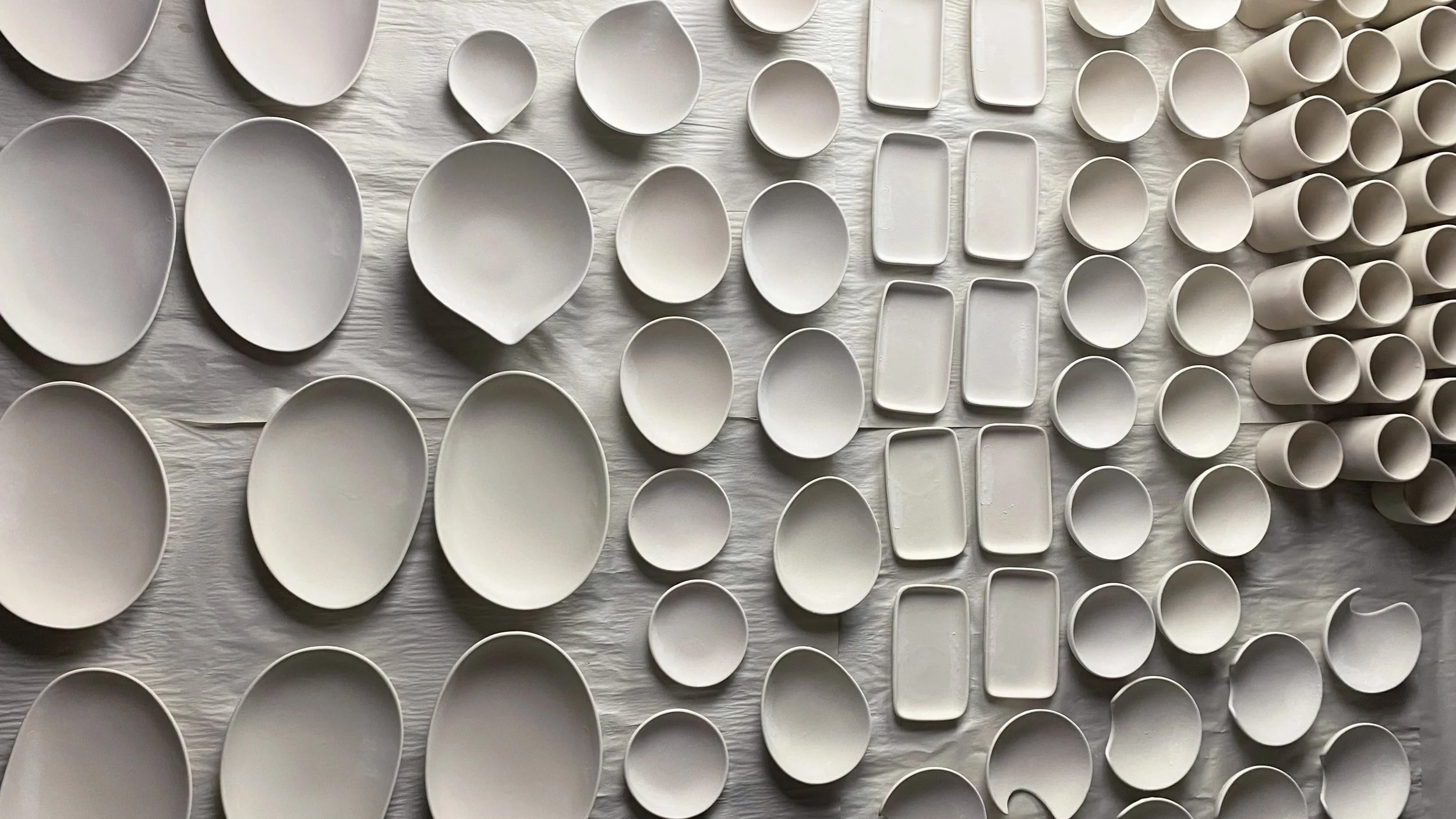It’s about the process…
Slip-casting begins with liquid clay, porcelain in its earliest form: smooth and heavy with possibility.
I pour it into plaster molds, one by one, watching the flow fill every curve, the negative space that will become a bowl, a cup, a vessel.
Then I wait.
The plaster begins to draw moisture from the slip, coaxing the form to life as clay particles accumulate along the sides. Slowly, a wall begins to build, invisible at first, then thickening, the piece taking shape, particle by particle.
There’s a moment when I know it’s time, a sense I’ve developed over years of practice. A rhythm of pacing, of listening to what the porcelain wants.
I pour the excess slip back out. What remains is a hollow skin, soft and smooth. It will dry. Be trimmed. Cleaned. What was once liquid becomes a quiet shape, waiting for next steps.
The magic is in this rhythm of repetition: rinse, pour, wait. Trim. Clean. Repeat.
Slip-casting lets me hold both precision and grace. It gives structure to the ephemeral.
Every piece I make passes through this rhythm. It begins as liquid, becomes form, edges cleaned and smoothed, then undergoes its trials by fire: bisque, glaze, and sometimes an image transfer.
But it’s in these first moments of focused, repetitive motion where the heart of the work takes shape. And where my heart rests.

